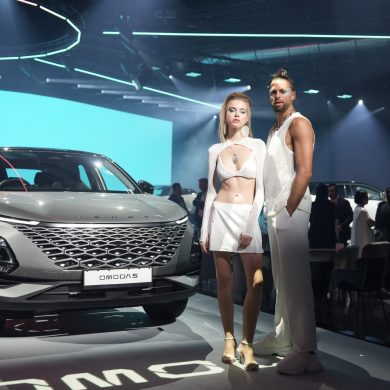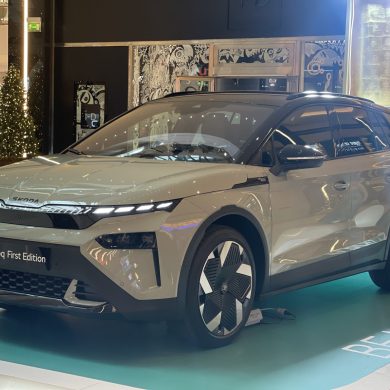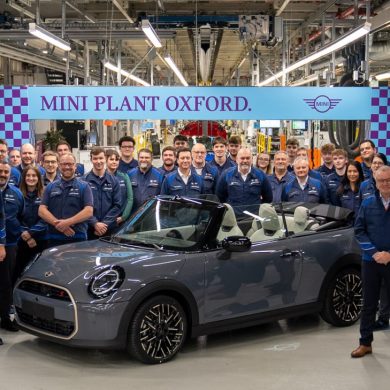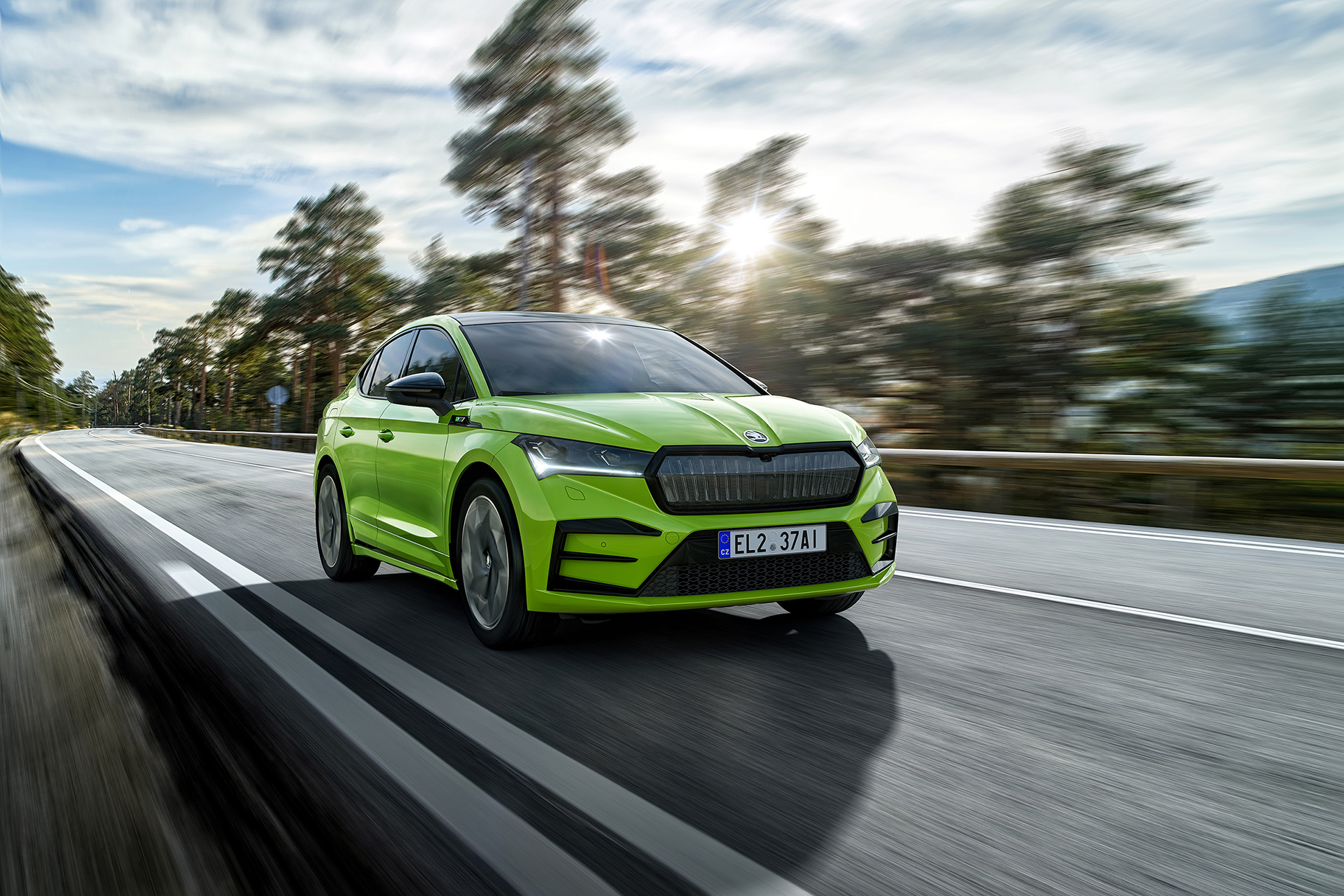
With the release of the ENYAQ COUPÉ RS iV, η SKODA writes the next chapter in the success story of the RS range. Following the plug-in hybrid SKODA OCTAVIA RS iV, the SUV coupé, exclusively in the striking Mamba Green colour, is the first all-electric car in the brand's RS sports range. The coupé shape has design affinities with that of the 180 RS and 200 RS rally prototypes, for which SKODA introduced the abbreviation RS (Rally Sport) in 1974. A year later, SKODA introduced the 130 RS, a coupé weighing just 720 kg, which secured numerous victories in international rally competitions as well as on the track, until 1983. In 1977, the SKODA 130 RS finished first and second in its class at the "Monte" and won the Acropolis Rally accordingly. On the track, it took overall victory in the European Touring Car Championship in 1981. Since 2000, the RS emblem has been used on SKODA's most sporty production models.
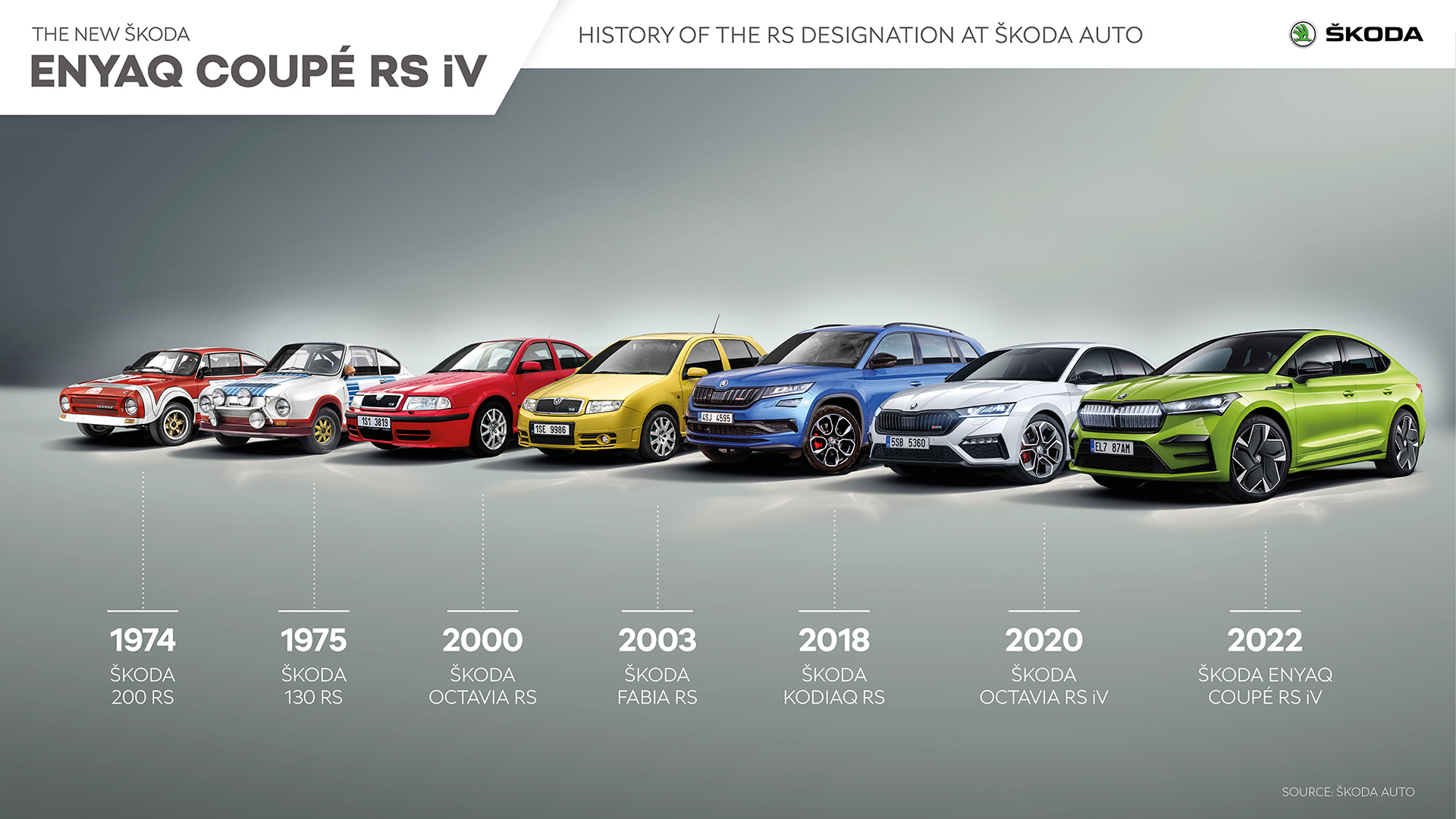
SKODA sport models with RS DNA since 2000
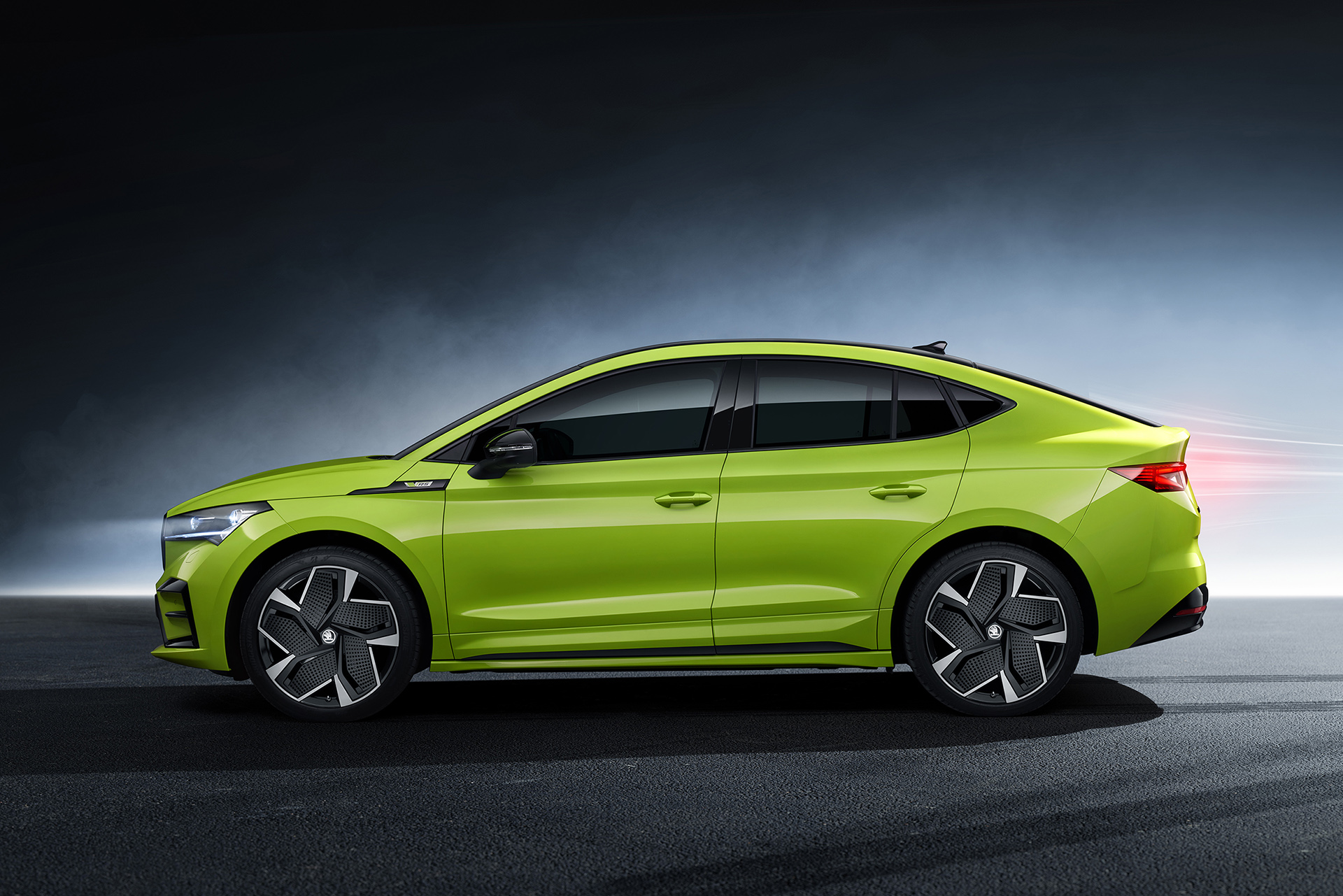
The first RS production model - launched in 2000 alongside the OCTAVIA WRC, the model that marked SKODA's entry into the World Rally Championship - was the OCTAVIA RS, equipped with a 1.8-litre turbocharged engine developing 180 PS (132 kW). The first OCTAVIA COMBI RS followed just a year later. The second, third and fourth-generation OCTAVIAs also included RS versions in both body styles, now with powerful diesel engines, while the first electrified OCTAVIA RS, a 180 kW (245 PS) plug-in hybrid model, was introduced in 2020.
KODIAQ the first SUV in the RS family
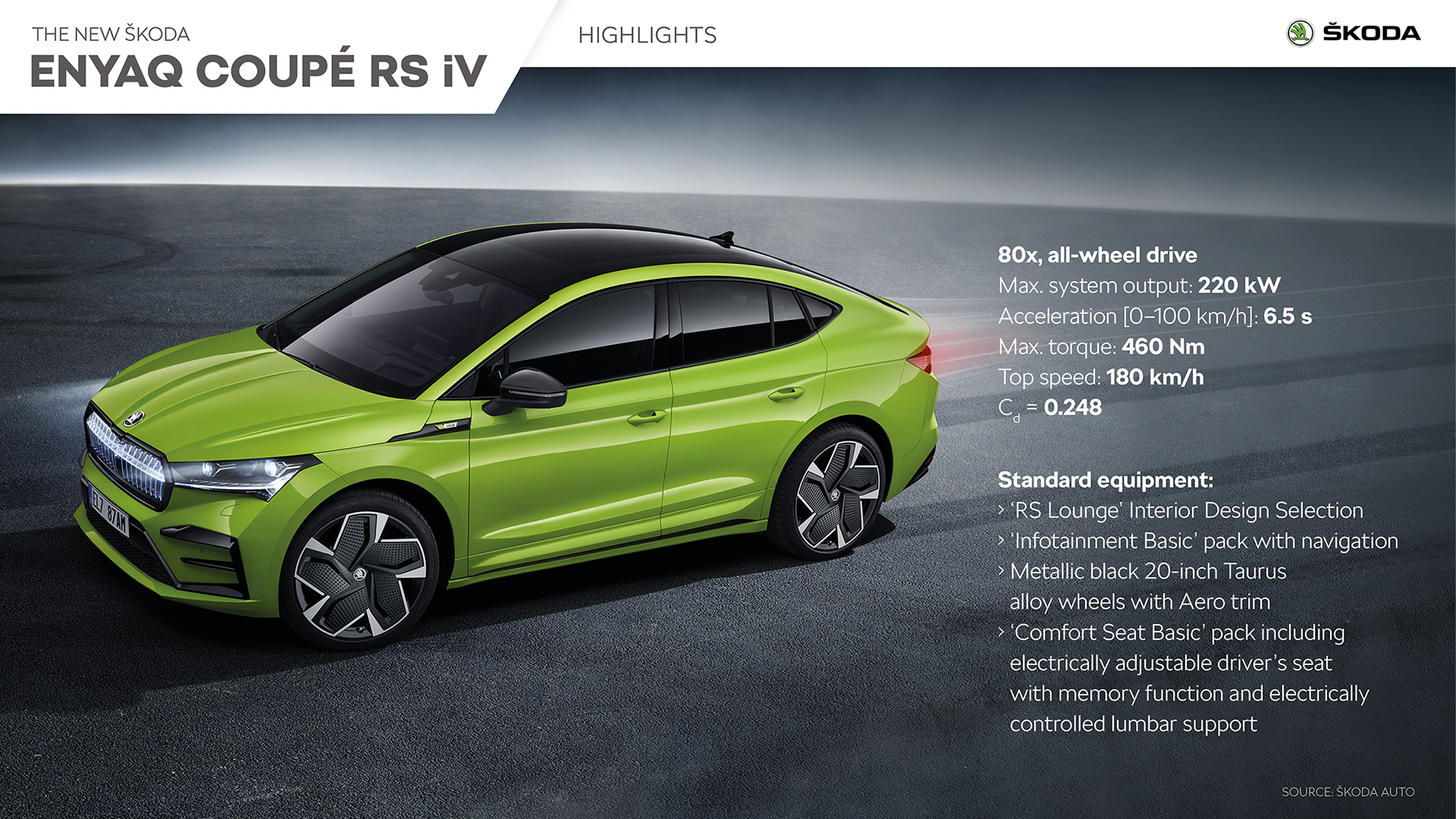
In 2003, SKODA added the FABIA to the RS range, with direct references to the FABIA WRC racing car, introduced at the same time. In the spirit of the times, the model was equipped with a 1.9 TDI engine with 130 PS (96 kW). In 2010, the RS version of the second-generation FABIA was unveiled, equipped with a 1.4-litre petrol engine producing 180 PS (132 kW) with a turbocharger and turbocharger combination. This model was also available in wagon bodywork. The first SUV to join the ranks of RS models was the KODIAQ RS, launched in 2018. The 240 PS (176 kW) 2.0 TDI set a lap record for a seven-seater SUV on the legendary Nordschleife at the Nürburgring, covering the distance of 20.832 km in just 9:29.84 minutes. The model's biturbo diesel was replaced by a 245 PS (180 kW) 2.0 TSI petrol engine in the summer of 2021. The new engine is 60 kg lighter and provides the KODIAQ RS with even more dynamic driving characteristics.
SKODA ENYAQ COUPÉ RS iV
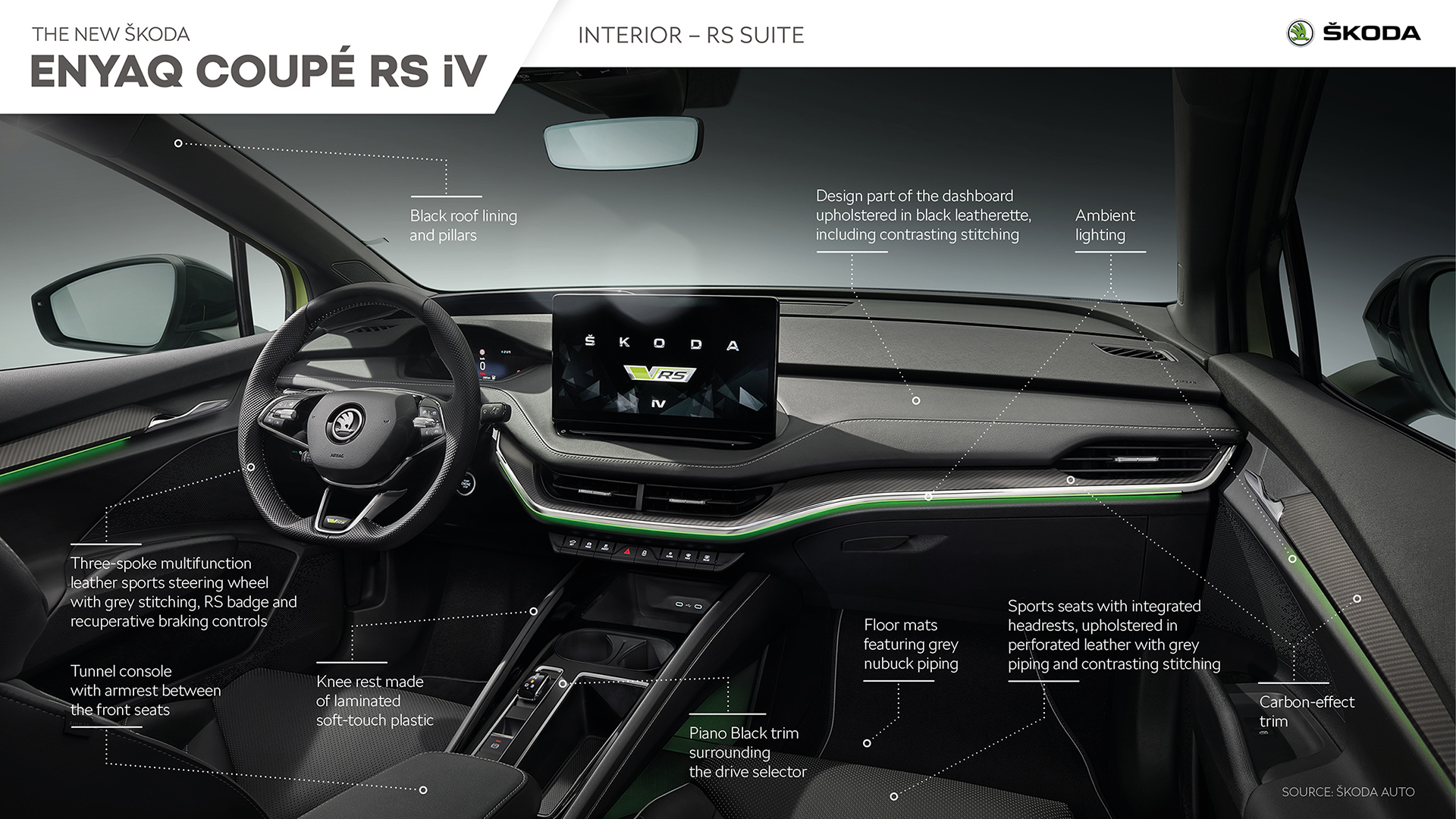
The most powerful model in the ENYAQ iV series has the largest battery of 82 kWh, as well as two electric motors - it is therefore four-wheel drive. The ENYAQ COUPÉ RS iV has a power output of 220 kW (299 PS) with a maximum torque of 460 Nm, accelerating from 0-100 km/h in just 6.5 seconds. It is the only version in the coupé range with a top speed of 180 km/h. At 8% gradients, the ENYAQ COUPÉ RS iV and ENYAQ COUPÉ iV 80x each have a maximum towing capacity of 1,400 kg.
Externally, the ENYAQ COUPÉ RS iV is distinguished by its striking green colour and black design features, the typical RS model red reflector strip on the rear. The standard equipment of the ENYAQ COUPÉ RS iV also includes the Crystal Face - 131 LEDs illuminate the distinctive SKODA grille.
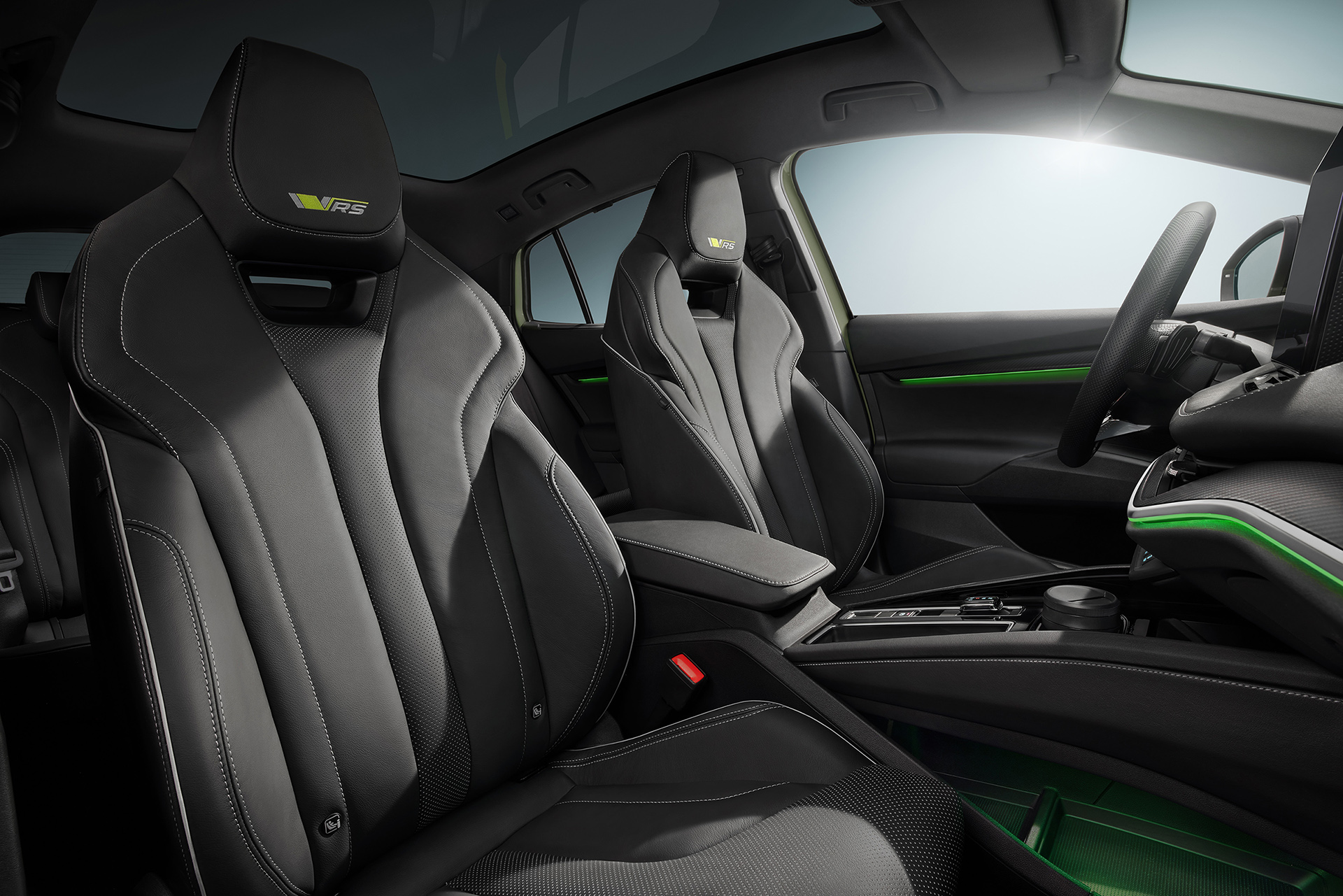
Inside, the Design Selections philosophy in the ENYAQ COUPÉ RS iV is expressed in two specially designed options, the standard "RS Lounge" and the optional "RS Suite". They are characterised by decorative stripes with carbon fibre effects on the dashboard and door trim, pedal covers in an aluminium design and sports seats with integrated headrests and RS emblem, while the heated multifunctional leather sports steering wheel with three spokes also features an RS badge. Depending on the option, the seats are upholstered in black Suedia microfibre or black perforated leather.


